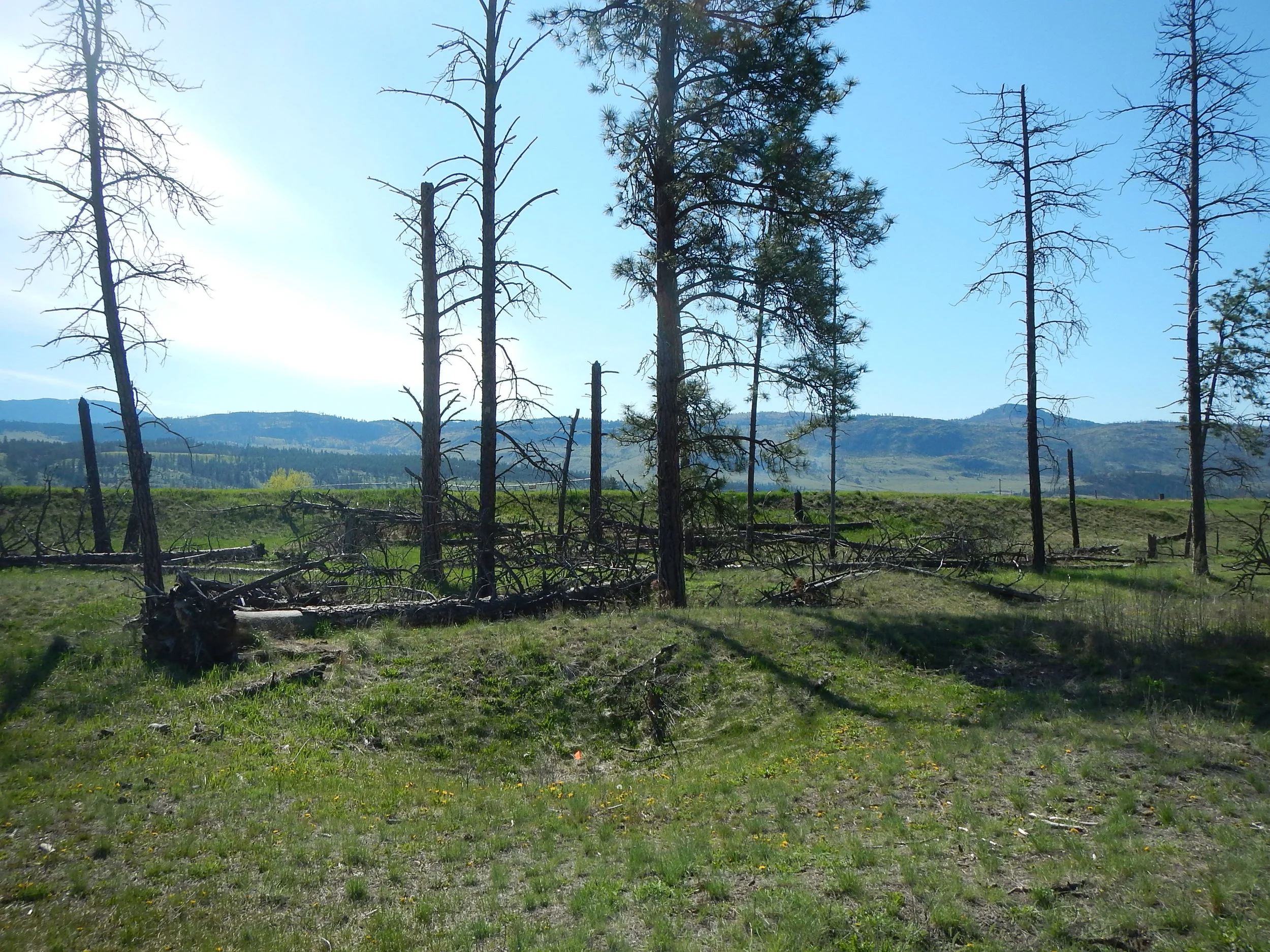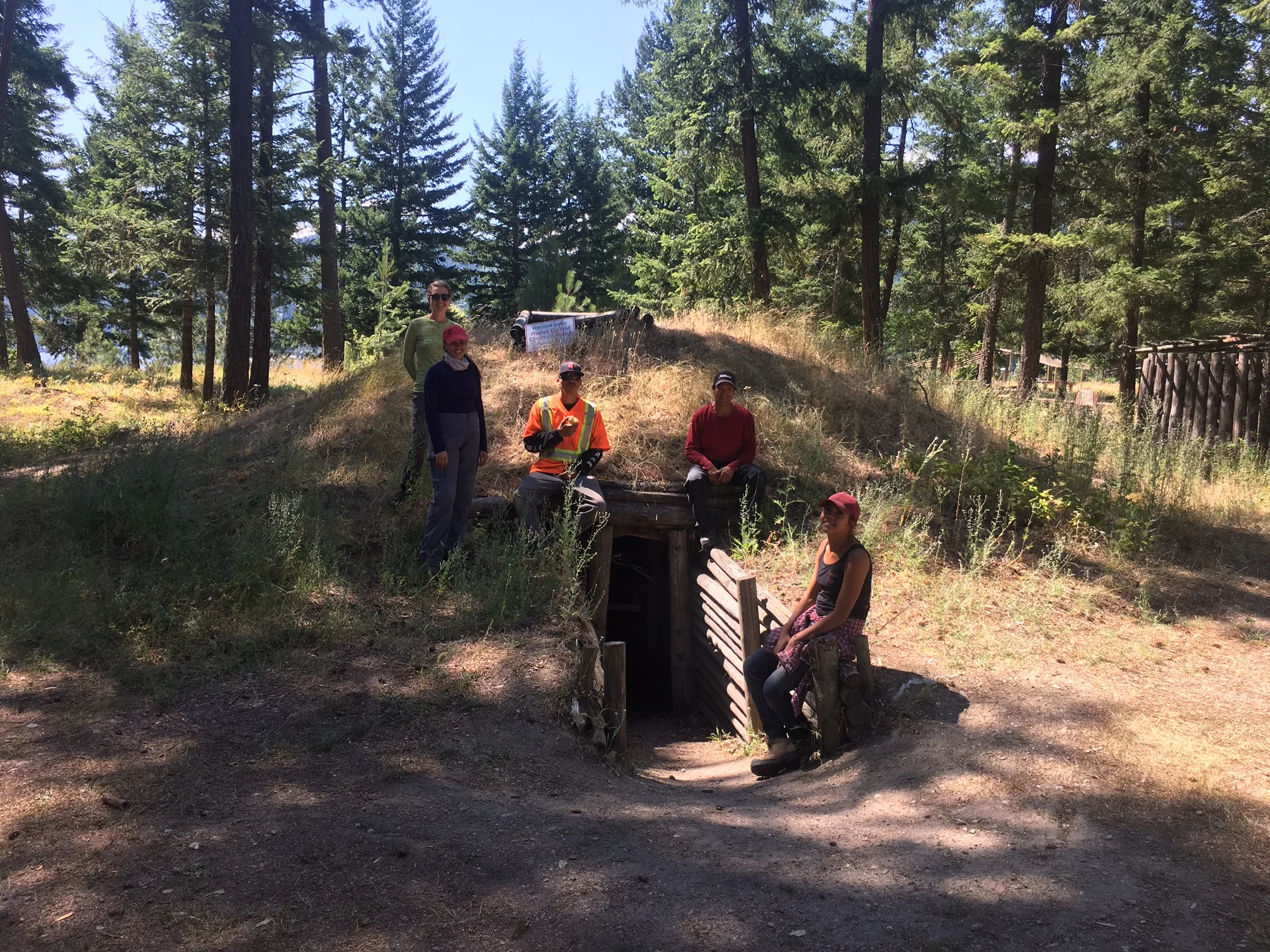Stone tools and other portable items left behind by people from the past make up a significant portion of archaeological research, as the last three installments of this column have done an excellent job of highlighting. The physical remains of past human activities are the focus of archaeological studies, which also include non-portable items. Archaeologists refer to the non-portable components of archaeological sites, such as hearths, trails, or structural remains, as “features”.
Walking along the lake and river shores in the interior we sometimes come across small and large depressions in the ground. These depressions provide evidence of past human occupation and archaeologists call these distinctive features “cultural depressions”. The function of a cultural depression is determined in part through the size and shape of the depression as well as the results of any archaeological testing. Common types of cultural depressions include the remains of past housing structures, storage facilities, or cooking locations.
The larger depressions, ranging in size from 5 to 15 m or more in diameter, are typically the remains of housepits. These were semi-subterranean houses that were constructed by digging a pit and piling excavated sediments around the perimeter to form a rim. A timber frame was then assembled over the excavated pit and covered with a combination of woven mats, dry grasses, pine needles, bark, animal skins, and sod. This style of house was often occupied in the late fall through the winter and snow would accumulate on the surface adding extra insulation during the cold winter months.
Entrances to the housepits commonly consisted of a timber framed side entrance or an opening in the top centre of the house that acted as both a chimney and an entrance/exit using a ladder. Inside there would be sleeping platforms and benches around the perimeter and a hearth in the centre to provide warmth, light, and a place to cook. Several different styles of housepits have been recorded in BC’s interior representing regional differences and changes through time. Housepits were often used and re-used for multiple years. They would be abandoned in the summer in favour of more portable housing styles, such as tents, and then cleaned out and reoccupied the following autumn.
Smaller diameter depressions (1 to 3 m) are often the remains of earth ovens or storage pits. Earth ovens or roasting pits were used to cook various food items and often contain large quantities of cooking stones and burned rock. Storage or cache pits consisted of an excavated pit lined with woven mats, dried grasses, or tree boughs. Food items, for instance dried salmon or prepared roots, were then placed in the pits and reburied for consumption later in the winter. Storage pits were often located within or just outside housepit locations so that stored food could be accessed throughout the winter.
What typically remains of abandoned housepits in the present day is a sunken pit with a well-defined rim around the perimeter that formed when the house structure collapsed. These depressions may be easily identified in open grassland terrain, but in more forested areas cultural depressions might only be located when someone fortuitously stumbles into the feature.
Cultural depression sites measuring several hectares in size and containing hundreds of housepits, earth ovens, and/or storage pits have been recorded in the southern interior. Locally, you can visit reconstructed winter houses (or kekulis) at the Secwepemc Museum and Heritage Park in Kamloops and Quaaout Lodge in Squilax. Visiting the reconstructed houses is a great experience and well worth the trip. If you come across a depression during a hike and want to report its location or wish to learn more about cultural depressions, please contact a local archaeologist.



